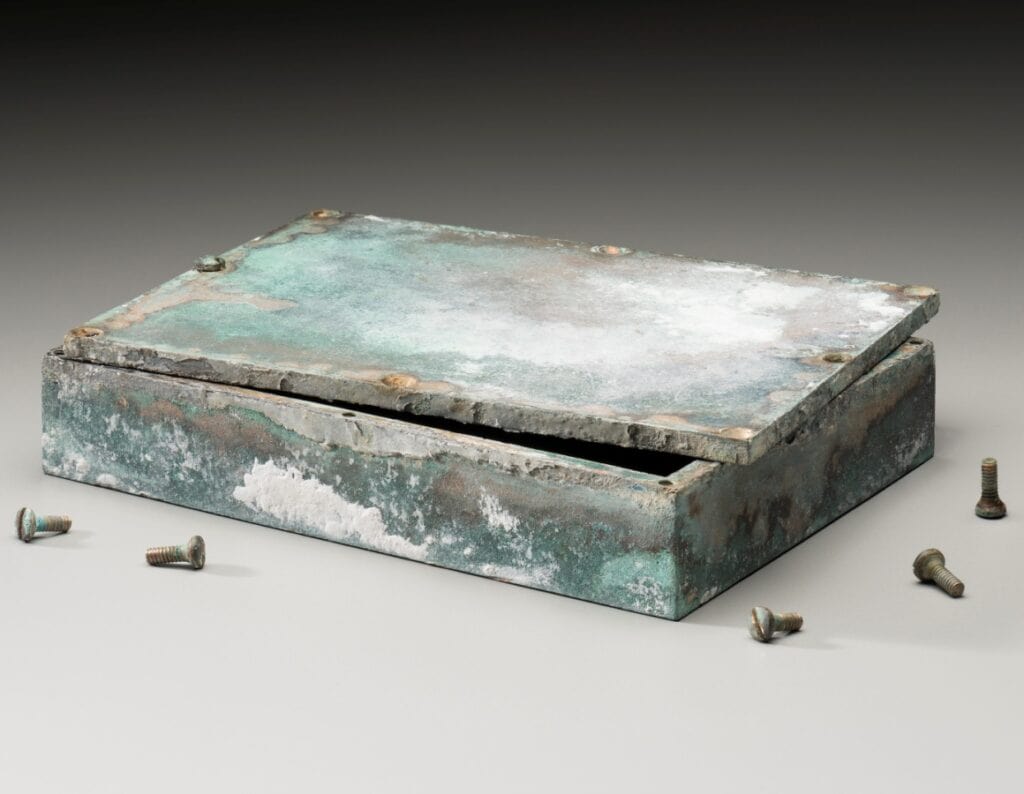In our fast-paced and ever-changing world, time capsules serve as an important reminder to slow down and reflect on the legacy we leave behind. With the rapid development of technology and the constant evolution of society, time capsules are more relevant than ever before, providing a tangible connection to our past and a hopeful glimpse into our future. They are a way to encapsulate and preserve important aspects of a particular time period or culture.
The idea is simple yet effective: gather various items that represent the time, put them in a container, and bury or store them for a specific period. In a world that is increasingly focused on the present and the future, time capsules remind us of the importance of preserving the past for future generations. In this blog post, we will explore some of the oldest known time capsules, highlighting their significance and importance in preserving history.
10. The Juneau Time Capsule
Year Created: 1994
Place Buried: Hurff Ackerman Saunders Federal Building, Juneau, AK
Contributor/s: Michael Orelove
Opened: No
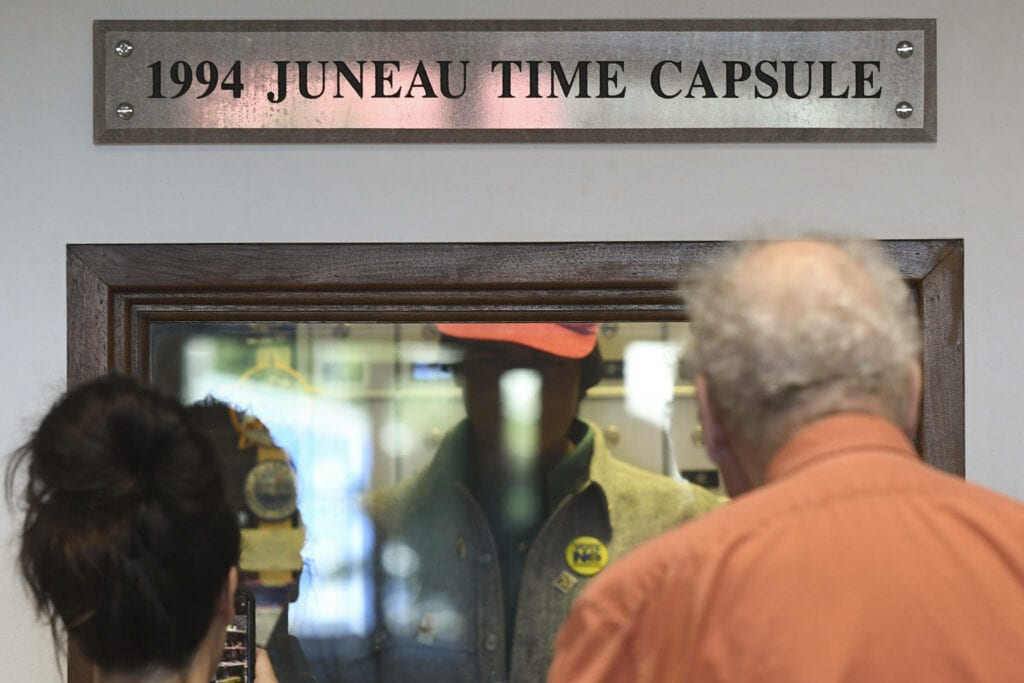
The Federal Building in Juneau, Alaska has a distinctive feature – a roomy time capsule with an observation window made of plate glass. The capsule, which measures 9 by 6 feet, was closed in 1994 and holds a wide variety of mementos that were gathered by citizens as part of a citywide initiative. Along with these objects, the vault houses many letters written by schoolchildren to future students.
The letters were put on display several years after the capsule was sealed, but the original copies remain sealed off until New Year’s Eve 2094, exactly 100 years after the capsule was buried. The Juneau time capsule provides an important glimpse into the everyday life of people living in Alaska in the 1990s. It is a unique and fascinating way for future generations to connect with the past and gain a deeper understanding of the culture and values of the people who lived during that time.
Did You Know?
Included in the collection are objects that were popular in the 1990s, such as a Wonderbra, a Sony Walkman, and a Barbie doll, as well as older items like family heirlooms, expired driver’s licenses, and a collection of menus from every restaurant in Juneau.
9. NASA Voyager Golden Record
Year Created: 1977
Place Buried: Space
Contributor/s: Carl Sagan and Frank Drake, Ann Druyan, Timothy Ferris, Jon Lomberg, Linda Salzman
Opened: No
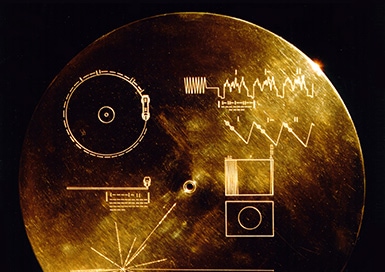
The NASA Voyager Golden Record is a legendary time capsule launched into space in 1977 aboard the Voyager 1 and Voyager 2 spacecraft. The Golden Record was created as a message to any extraterrestrial life that may encounter the Voyager probes. It contains a variety of sounds and images that represent the diversity of life and culture on Earth.
The Golden Record contains 115 analog-encoded images, including photographs of humans, animals, and landscapes from around the world, as well as scientific diagrams and maps. It also includes a variety of natural sounds, such as thunder, wind, and bird calls, as well as music from different cultures, ranging from classical to folk to rock. The Golden Record was created by a team of scientists, artists, and writers led by astronomer Carl Sagan.
The team carefully selected the content of the record to represent the best of human achievement and culture, as well as to convey a message of peace and goodwill.
Did You Know?
The record was sealed in a protective case made of gold-plated copper and aluminum, which is designed to withstand the harsh conditions of space and protect the contents from radiation and other environmental hazards.
8. Pioneer Plaques
Year Created: 1972
Place Buried: Space
Contributor/s: Carl Sagan, Frank Drake
Opened: No
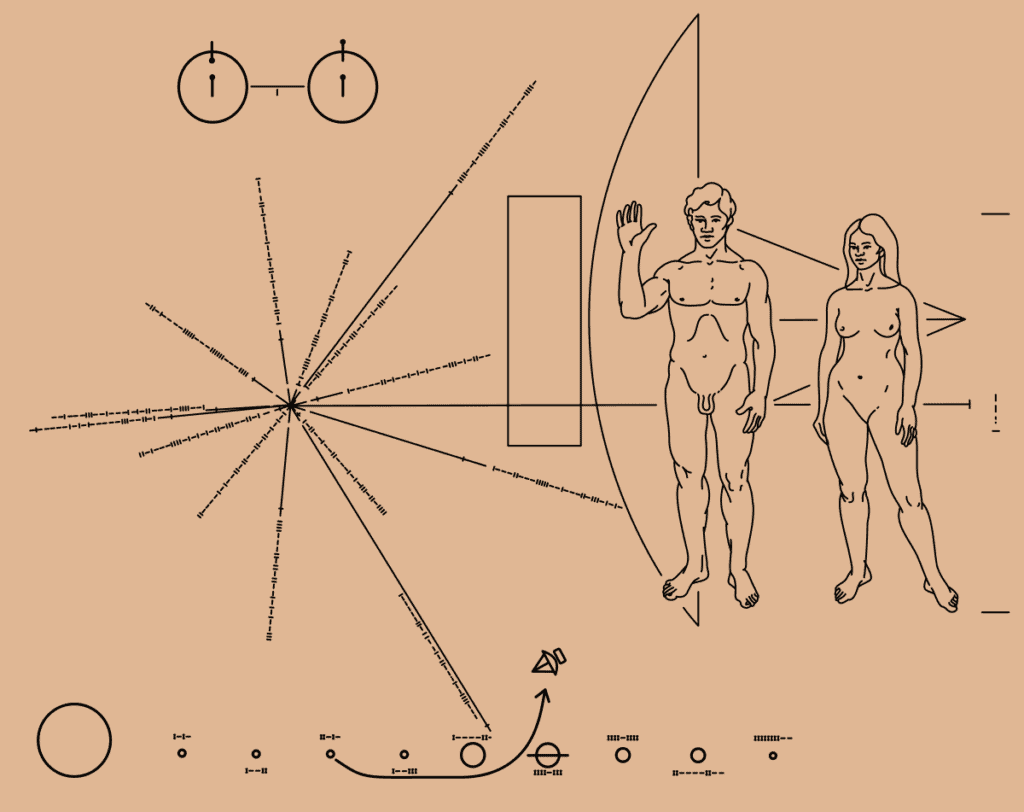
The Pioneer Plaques are a set of two-time capsules that were designed to be sent into space aboard the Pioneer 10 and Pioneer 11 spacecraft in 1972 and 1973. The plaques were created as a way to convey information about humanity and the planet Earth to any extraterrestrial intelligence that might encounter the spacecraft as they journeyed through space.
A group of scientists and artists, including astronomer Carl Sagan and his spouse, artist Linda Salzman Sagan, worked together to create the Pioneer Plaques. These plaques are composed of gold-anodized aluminum and showcase a straightforward diagram of the solar system. The diagram includes lines that trace the route of Pioneer 10 and Pioneer 11. The plaques also depict a man and a woman, standing side by side, with their hands raised in a gesture of greeting.
Did You Know?
The human figures on the Pioneer Plaques are depicted without clothing, in order to represent the human form without reference to any particular cultural or historical context.
7. The Expo ’70 Time Capsule
Year Created: 1970
Place Buried: Osaka Castle, Osaka, Japan
Contributor/s: Panasonic Corporation, The Mainichi Newspapers
Opened: No
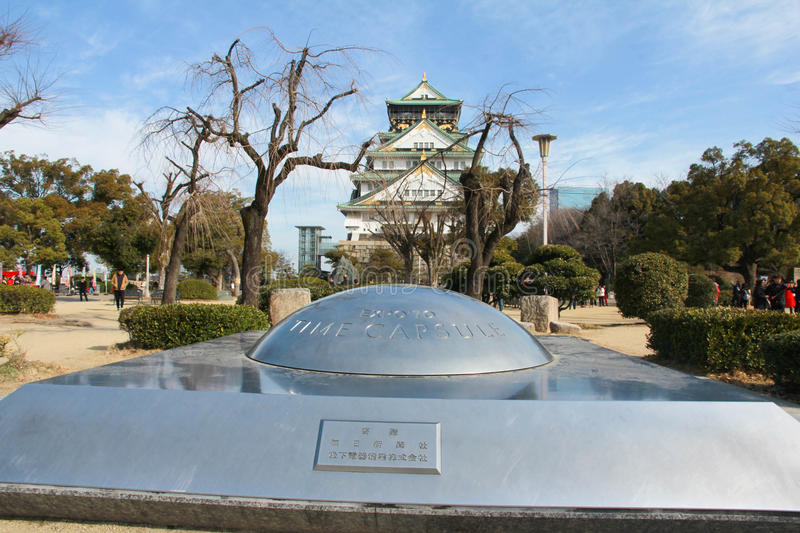
The Expo ’70 Time Capsule is a unique time capsule that was created to commemorate the 1970 World Exposition in Osaka, Japan. The capsule was designed to be opened in the year 6970, a full 5,000 years after it was first sealed, making it one of the most long-term time capsules ever created.
Although one capsule was opened in the year 2000 it contained messages from world leaders and other important figures. This capsule was accidentally opened by workers who were excavating a site in Osaka in 1984, and its contents were publicly displayed. The Expo ’70 Time Capsule is a massive stainless steel sphere, weighing over 32 tons and measuring 5.2 meters in diameter.
The capsule is filled with a variety of objects, including newspapers, magazines, books, and recordings of music and speeches from the Expo. The capsule also contains a number of technological artifacts, including a transistor, a microchip, and a solar cell, which were considered cutting-edge technology at the time.
Did You Know?
The capsule was sealed in a special ceremony attended by government officials and representatives from around the world. The capsule was buried in the center of the Expo ’70 site, where it remains today, marked by a stone monument and a plaque that explains the contents of the capsule.
6. The Westinghouse Time Capsules
Year Created: 1939 and 1965
Place Buried: Flushing Meadows Park, Queens, NY
Contributor/s: Westinghouse Electric & Manufacturing Company
Opened: No
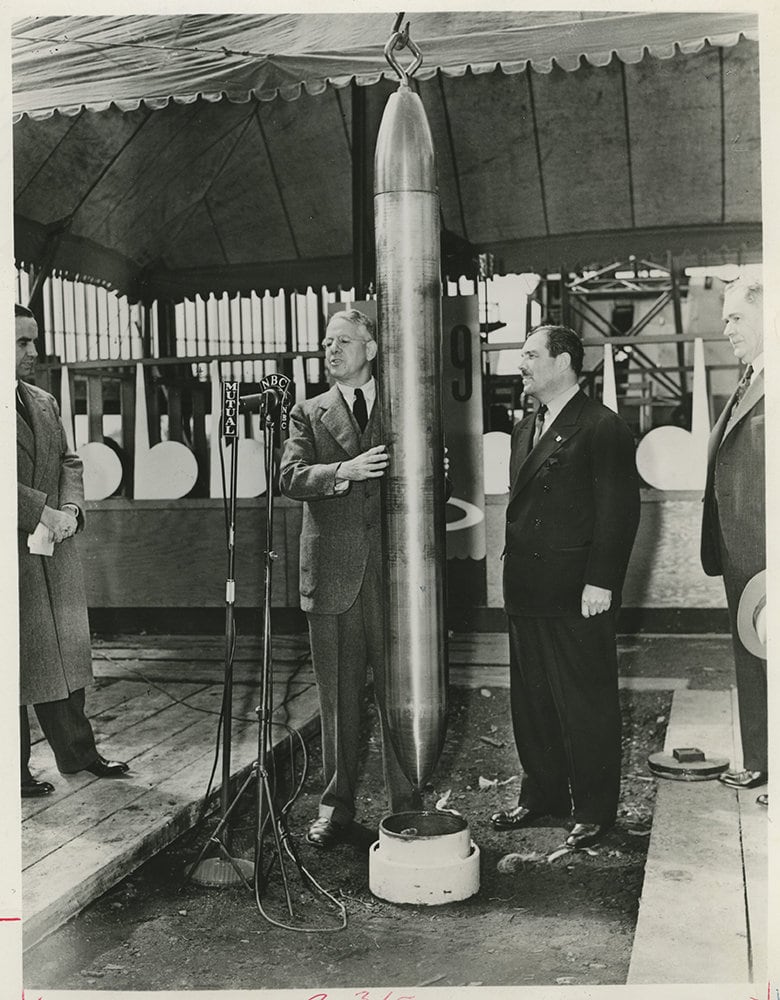
The Westinghouse Time Capsules were two-time capsules created by the Westinghouse Electric & Manufacturing Company in 1939 and 1965, respectively. The time capsules were created to showcase the company’s technological achievements and preserve them for future generations.
The first Westinghouse Time Capsule was buried at the 1939 New York World’s Fair and contained various items that were thought to represent American life at the time. Some of the items included a kewpie doll, a Mickey Mouse watch, a Sears Roebuck catalog, and a pack of Camel cigarettes. The capsule was designed to be opened in 5,000 years, in the year 6939. Both Westinghouse Time Capsules were made of a special alloy called Cupaloy, which was developed by the company and was said to resist corrosion for thousands of years.
The capsules were buried in airtight chambers and placed in large concrete vaults to protect them from the elements. While the capsules have not yet been opened, they remain an important reminder of the technological achievements of their time and the desire to preserve them for future generations.
Did You Know?
In addition to the items included in the capsules, Westinghouse also commissioned a series of short films that were designed to provide a glimpse into everyday life in America during the respective time periods.
5. The Crypt of Civilization
Year Created: between 1937 and 1940
Place Buried: Phoebe Hearst Hall, Atlanta, GA
Contributor/s: Thornwell Jacobs
Opened: No
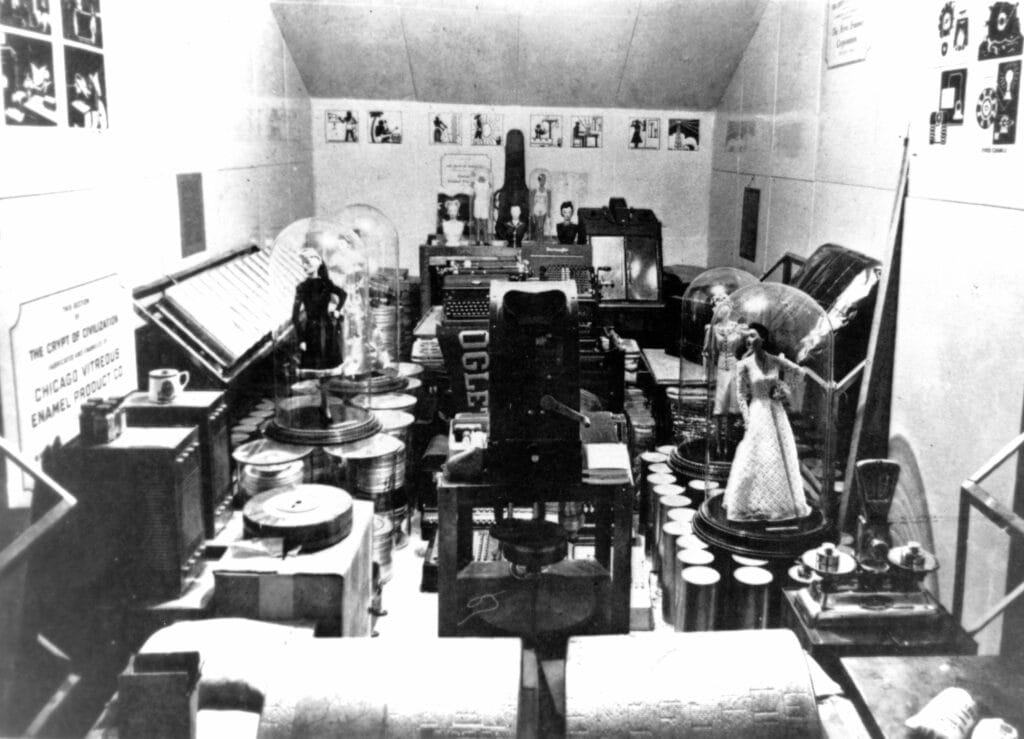
The Crypt of Civilization is considered one of the most ambitious time capsules ever created. Located at Oglethorpe University in Atlanta, Georgia, it was sealed in 1940 and is designed to be opened in the year 8113 AD, a span of 6,177 years. The creator of the Crypt, Dr. Thornwell Jacobs, believed that future generations would benefit from a comprehensive record of human history and culture.
The Crypt of Civilization is made up of a large, air-tight room filled with thousands of artifacts, documents, and other materials that were considered significant in the early 20th century. Among the items included in the Crypt are books, films, and sound recordings, as well as more unusual items such as a toaster, a bottle opener, and a model airplane. There are also records of current events, such as newspapers and magazines, as well as samples of food, clothing, and other everyday items.
Did You Know?
One of the most interesting aspects of the Crypt is its preservation system. The room was filled with a special gas mixture that will help to prevent the decay of the materials inside.
4. Kan aabnes i 2012
Year Created: 1912
Place Buried: Otta, Norway
Contributor/s: Johan Nygaard
Opened: Yes
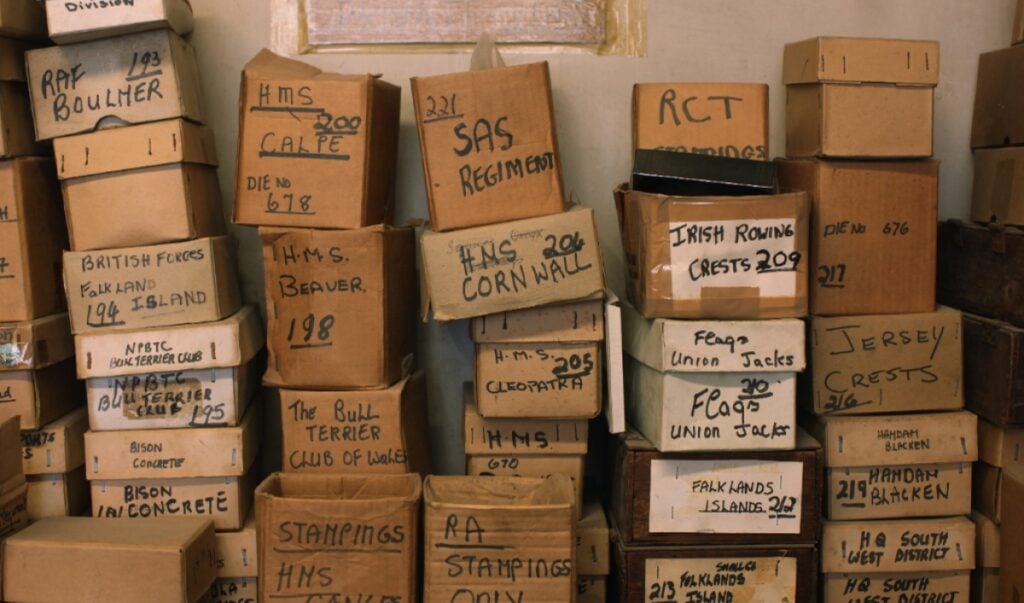
In 2012, the small town of Otta in Norway finally opened a mysterious package that had been sealed for over 100 years. The package bore the inscription, “Kan aabnes i 2012,” meaning “Can open in 2012.” For almost a century, the people of Otta had resisted the temptation to open the package, which was sealed in 1912 by the then municipality’s mayor, Johan Nygaard.
The package contained some letters from the United States and discussions of finances for a Kringen memorial, along with some newspapers. Although experts are still analyzing the contents of the parcel, it appears that there was nothing to justify the extraordinary hype surrounding the event.
Despite the underwhelming contents of the package, the opening of the package was a significant event for the people of Otta. The package had been a mystery for almost a century, and its opening was a culmination of years of anticipation. The fact that the package was opened during the celebration of the 400th anniversary of the Battle of Kringen added to the significance of the event.
Did You Know?
The opening of the package serves as a reminder of the power of mystery and anticipation. For almost a century, the people of Otta resisted the temptation to open the package, and the mystery surrounding its contents only grew with time.
3. The Detroit Century Box
Year Created: 1900
Place Buried: Detroit’s Old City Hall
Contributor/s: William C. Maybury
Opened: Yes
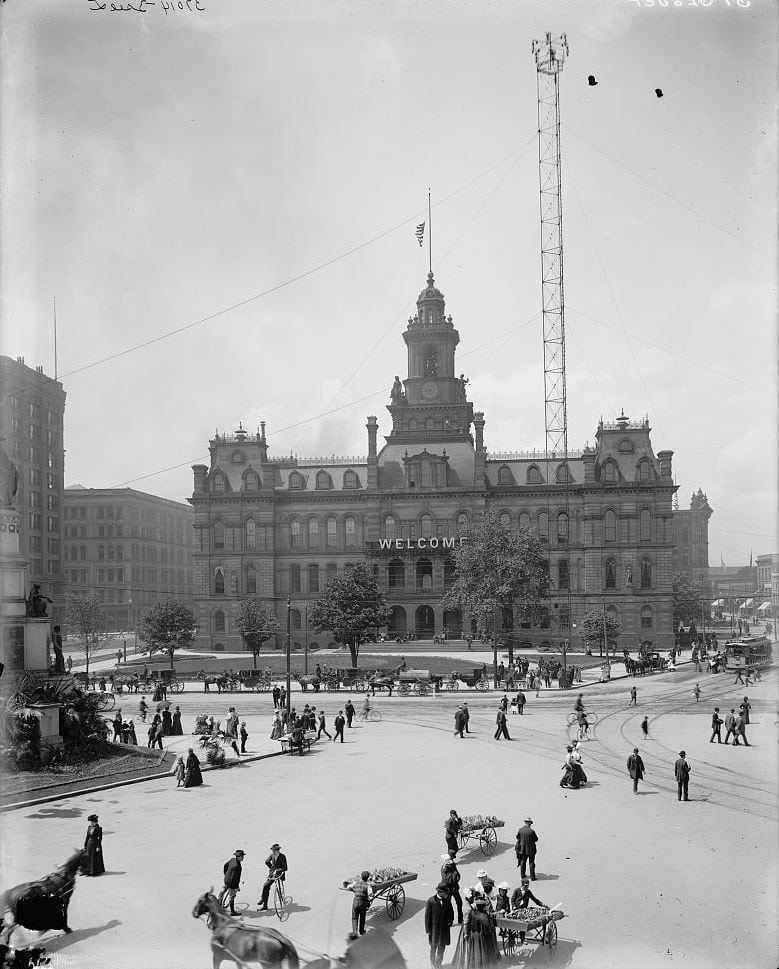
The Detroit Century Box is a time capsule that was sealed in 1900 to commemorate Detroit’s first 100 years as a city. The box was buried in the cornerstone of Detroit’s Old City Hall, which was demolished in 1961. The box was rediscovered in 2000, after being lost for nearly 40 years. The box contains over 30 items, including photographs, newspapers, a flag, and various other artifacts from the turn of the 20th century.
Some of the most interesting items in the box include a letter from U.S. President Benjamin Harrison, a letter from Thomas Edison, and a letter from Detroit Mayor William C. Maybury.
The Detroit Century Box is a fascinating artifact that provides a glimpse into Detroit’s past. The brass box is a symbol of the significance of safeguarding history and highlights the significance of time capsules in capturing a specific moment in time.
Did You Know?
The box was opened on December 31, 2000, in a ceremony that was attended by thousands of people. The opening of the box was a major event in Detroit, and the contents of the box were put on display at the Detroit Historical Museum.
2. The 1876 Century Safe
Year Created: 1876
Place Buried: Philadelphia Centennial Exposition
Contributor/s: Anna Deihm
Opened: Yes
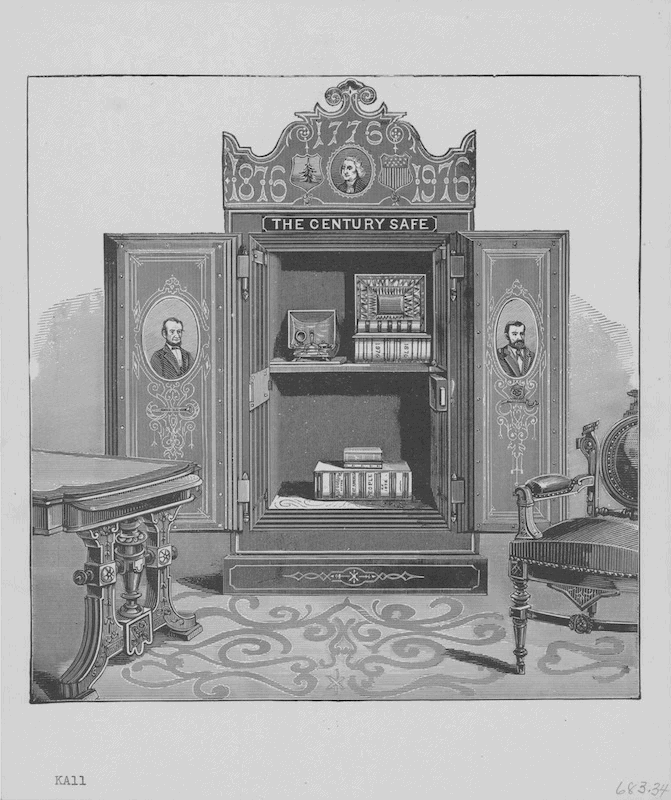
Anna Deihm, a publisher from New York, is credited with creating the first ever planned time capsule, which she called the “Century Safe,” back in 1876. This unique artifact was displayed at the U.S. Centennial Exposition held in Philadelphia, and it housed an array of items from the 19th century. The contents of the Century Safe included a book about temperance, a collection of signatures from Americans, , an inkstand and gold pen, and several pictures of President Ulysses S. Grant and other political figures taken by photographer Mathew Brady.
After its sealing in 1879, the Century Safe was placed under the East Portico of the U.S. Capitol building, where it remained forgotten. It was not until the bicentennial celebrations in July 1976 that the time capsule was rediscovered, restored, and opened as scheduled.
Did You Know?
The Century Safe was a groundbreaking creation and paved the way for future time capsules, it being the first ever planned time capsule. It provided a unique glimpse into the past and allowed people to connect with their predecessors from a century earlier.
1. The Massachusetts State House Time Capsule
Year Created: 1795
Place Buried: Massachusetts State House
Contributor/s: Samuel Adams, Paul Revere, William Scollay
Opened: Yes
photo source: Museum of Fine Arts Boston
As of today, the Massachusetts State House Time Capsule, which was created in 1795, is considered the oldest time capsule in the world. During the construction of the Massachusetts State House, Governor Samuel Adams, Paul Revere, and Colonel William Scollay placed the time capsule in its cornerstone. An exhibit called “Inside the Box: Massachusetts State House Time Capsule Revealed” showcased the 35 items that were found inside the capsule.
The contents of the Massachusetts State House Time Capsule revealed during the exhibit “Inside the Box” included various items such as coins, newspapers, and documents. Additionally, the brass box that housed the items was also exhibited.
The objects found in the time capsule offered a fascinating glimpse into life during the late 18th and 19th centuries. The coins, for example, included several half-cent pieces that were minted in the 1790s, while the newspapers provided a window into the events of the time, including the death of King George III and the coronation of his successor, King George IV.
Did You Know?
The most remarkable discovery of the “Inside the Box: Massachusetts State House Time Capsule Revealed” exhibit was the silver plaque that is thought to have been engraved by Paul Revere.



